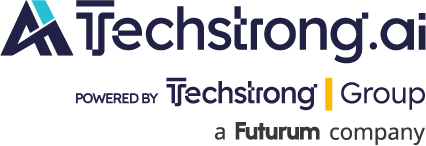
If you’ve been in IT long enough, you know complexity is like gravity — it’s always there, pulling at you. Every new tool, every shiny platform, every “must-have” feature adds just a little more weight. Over time, you start to feel it in your bones. Managing today’s IT landscape isn’t just about keeping the lights on — it’s about not getting buried under a landslide of SaaS apps, devices and security alerts before your morning coffee.
The latest Q3 2025 IT Trends Report from JumpCloud confirms what many of us have been feeling: The complexity has gone from a slow creep to a tidal wave. Rapid AI adoption, mobile-first workforces and an ever-expanding buffet of SaaS solutions have made our environments more diverse — and more complicated — than ever. Add in macroeconomic uncertainty, geopolitical tension and shrinking budgets, and you’ve got the perfect recipe for sleepless nights in the server room.
So here’s the question: How do we fight back?
Modern IT’s Messy Reality
JumpCloud’s survey of more than 800 IT leaders paints a clear picture. The average organization now uses 9.3 tools to manage core IT functions. Only 5% can get by with fewer than four. The result? Tool sprawl — and with it, inefficiency, higher costs, compliance risk, and, most worrying, security gaps.
Diversity in tools and operating systems isn’t inherently bad. In fact, most organizations today juggle an average of three OSes and support both iOS and Android. Hybrid productivity stacks are the norm, with two-thirds of Microsoft 365 shops also running Google Workspace. This flexibility fuels innovation — but unmanaged, it also fuels chaos.
74% of IT pros say managing all their tools and platforms is complex. That number shouldn’t surprise anyone.
The Case for Unification
So what’s the fix? According to the report, IT unification tops the list. Consolidating tools under a single, unified architecture reduces complexity, cuts costs and closes security gaps. It also gives IT leaders the visibility and control they need to do more than just react — they can actually lead.
The payoff is tangible. Organizations with fully unified IT environments:
- Play a bigger role in strategic planning.
- Align technology more closely with business goals.
- Deliver better end-user experiences.
And here’s a stat worth noting: Only 19% of organizations have achieved full unification. That means the vast majority are still living in some version of the “Frankenstack” era — duct-taping disparate systems together and hoping for the best.
Security: Zero-Trust or Bust
The report makes it clear that security remains a top concern, with identity emerging as the primary threat vector. AI-driven threats, identity-based attacks and device security top the list of worries for IT leaders.
Most organizations have moved past perimeter-based models, but only 11% have fully implemented zero-trust. That’s not nearly good enough in 2025.
The challenge is balancing security with usability. Over 60% of IT pros say they actively work to strike that balance, with nearly half adopting SSO or passwordless authentication. But too often, zero-trust gets stalled by budget fights, complexity, or plain old user resistance.
The takeaway? Security can’t just be airtight — it has to be seamless.
AI: The Big Disruptor — and Risk Multiplier
If there’s one area in the report that should make IT leaders sit up straight, it’s AI. Adoption is virtually universal — 99.6% of organizations are either using AI or planning to. AI is also the #1 strategic priority for the next year.
But here’s the rub: 94% see significant risks with AI adoption.
Top fears include:
- AI tools integrating with sensitive systems without proper oversight.
- Misuse by staff with elevated permissions.
- Poor governance of non-human identities.
These aren’t hypothetical concerns. They’re already happening. And while the hype machine keeps telling us to “just integrate AI into everything,” the reality is that without strong governance, visibility and access controls, AI can just as easily magnify your vulnerabilities as solve them.
This is where a unified IT platform isn’t just nice to have — it’s essential. A unified architecture can give you the oversight and telemetry you need to keep AI on a leash.
MSPs: Not Just Vendors, but Strategic Allies
Another standout finding: Over 80% of organizations use an MSP, and more than half expect those contracts to grow in scope. This isn’t about break-fix anymore. MSPs are evolving into strategic partners, guiding AI adoption, advising on compliance and helping unify sprawling IT environments.
For SMEs, in particular, MSP partnerships can be the difference between keeping up and falling hopelessly behind. The smart ones are already looking to MSPs for advisory services, not just technical execution.
Why Platforms Beat Point Solutions
When you zoom out across all these findings — complexity, security, AI, MSPs — the throughline is clear: Platforms win.
Point solutions might solve a specific problem quickly, but they add yet another tool, yet another dashboard, yet another set of integrations to maintain. Over time, they feed the very complexity we’re trying to tame.
Platforms, on the other hand, give you:
- Unified control across identities, devices and applications.
- Centralized visibility to spot threats before they spread.
- The ability to automate and orchestrate across the stack.
And no, a platform won’t make complexity disappear overnight. But it will give you the foundation to manage it intentionally — and that’s half the battle.
Final Take
We can’t stop IT from getting more complex — but we can stop complexity from running the show. The path forward is clear: Unify your architecture, govern AI like your business depends on it (because it does), partner with MSPs who can help you think strategically, and resist the siren song of one-off fixes.
In the end, the smartest IT leaders aren’t just fighting complexity — they’re using it as a catalyst to build simpler, stronger and more strategic systems.

